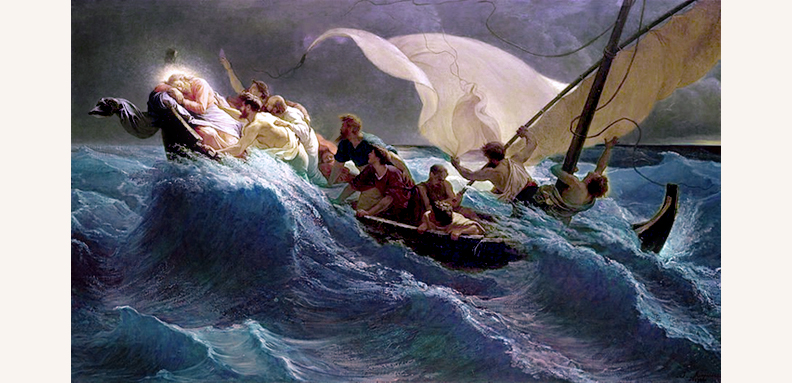
Trust in Divine Providence
“Lord, does it not concern You that we are perishing?”
– Mk. 4:38
Dear Friends of Carmel,
We regret that it has been such a long while since our last newsletter. Much has happened in Carmel – and in the world – since last spring… Days have turned to weeks, weeks to months, and time seems to be passing “faster than normal,” if that is indeed possible!
In our Lenten and Easter newsletters, we spoke briefly about the afflictions that have befallen the world and that are touching every individual person’s life, in some way or another. The virtues, spiritual lessons and encouragement we offered in those letters become ever more poignant, as turbulence and uncertainty grow. Perhaps we find some little relief in echoing the half despairing cry of the apostles as they shook Our Lord awake in the midst of the storm at sea, “Does it not concern you, Lord, that we are perishing?!” (Mk. 4:38)
Yes, God in Heaven and Our Lord in the tabernacles on earth almost seem asleep, inert, as the world around us falls apart. And another cry found in Scripture comes to mind: “Awake! Why are You asleep, O Lord? Arise! Cast us not off forever! Why do You hide Your face, forgetting our woe and our oppression?” (Ps. 43:24-25) Anxiety grows about the future and what trials it may have in store.
But the Lord of all is never far away from us! Did He not say to His apostles in the garden of Gethsemane, “Dost thou suppose that I cannot entreat My Father, and He will even now furnish Me with more than twelve legions of angels?” (Mt. 26:53) We must not, we cannot, forget that God is all-wise and all-powerful and still in charge, mightily arranging all according to His Divine Providence. In these days, the virtue of hope is sorely lacking, and not without good reason. So many of us have encountered in life great disappointment, betrayal and broken promises. After a time, if we are not careful of our souls, we learn to trust and depend on no one but ourselves. To what a sad and empty state of soul this leads us! For like the rest of humanity we too are imperfect, and also often disappoint, fall, and fail. This path can only lead to despair.

But God, Who is Himself perfection, Who has nothing but love for us, demands and deserves our complete trust. Yes, He requires of faithful souls an abandonment to His holy Will – a Will that is often difficult for us to understand or comprehend. God alone does not, and cannot, break His promises. He will always work towards our good, trying to lead us to our ultimate home in Heaven. He arranges every detail in our lives. Oh, if we could only learn to trust Him to do so! How much more peacefully would we walk through the afflictions in this life. With how much more confidence would we face the future.
How many people impatiently throw up their hands in the face of sorrow with the complaint, “What good God would do this? If He is so good, why does He allow all of this?” Human beings tend to see no other good than their immediate good and pleasure. Earthbound creatures that we are, if we do not have faith, we will always be lacking a supernatural view – God’s view – of the world and of life. To what other conclusion can we come, therefore, except, “Only a miserable God could have any reason for allowing misery?”
But how can we question the All-wise and All-powerful? How can our puny insights compare to His? God knows how to use both the good and evil of this world to form souls of unto sanctity. He tries them in virtue, strengthens them in faith and merit, punishes their faults and sins to bring them to contrition. In all these ways, He leads them to the heights of holiness, converting them, transforming them. When all one can see is a few flecks of paint, how can one appreciate or begin to comprehend the brilliance of the masterpiece, how both the highlights and the shadows work together for the beauty of the whole? Only in Heaven, when we will at last step back from the microscope of our own lives and our own feeble notions about how life should be for ourselves and for everyone else, only then will we see clearly God’s magnificent design, wisdom and care in everything He sent into our lives. But let us strive to see it here in this life, if only dimly, by a life of trust and abandonment to His work. “The hairs of your head are all numbered.” (Lk. 12:7)
For further reading about this topic, we can recommend the book Trustful Surrender to Divine Providence, a must-read for every Catholic who has not already read it. And in days such as these, it is good to read again. Many times have we personally given this book to those experiencing great trial, and never has it failed to bring strength and consolation to the recipient. Also: Abandonment to Divine Providence; all of the works of St. Francis de Sales, particularly Consoling Thoughts on God and Providence; Finding Confidence in Times of Trial; Uniformity with God’s Will; and others of the many spiritual books we offer, which mention and recommend this excellent counsel for life in God and saving our souls for Heaven! One of our new books, Patience and Humility by Bishop Ullathorne, treats of the personal struggles we all face when we must bear injuries, deal with sufferings of all kinds – and our own lack of virtue in doing so! “Self-mastery” is a frequent term used in this book – the controlling of our wieldy and often misdirected passions. The virtues of humility and patience are those of a soul abandoned to God’s Will:
By nothing except our own will can the soul or its good suffer injury. No one can be spiritually injured except by himself. So long as we possess our soul in patience (Lk 21:19), no one can take any part of that good away from us. We can only lose the good of the soul by not holding to it with constancy, and we thus sin by impatience.
When things are at their worst according to the world, if the calamity is rightly used, things begin to be at their best according to God. All things are in God’s hands, to give or take as He chooses; and an immortal soul is more precious in His sight than all that the world can give. When He strips a soul of earthly things, He calls upon that soul to look to Him and to trust in His care and Providence.
There is nothing really lost so long as God is with us, nothing, therefore, of which to despair. As long as we are simple, upright, fearing God and departing from evil, placing our hope in God and not in the prudence of the world, He who has care of His servants will turn our calamities into blessings.
For your further meditation, we insert these beautiful and consoling words of spiritual masters, beginning with St. Peter, one who had to endure and eventually benefit from his own failings and sins:

Be ye humbled therefore under the mighty hand of God, that He may exalt you in the time of visitation: casting all your care upon Him, for He hath care of you. Be sober and watch: because your adversary the devil, as a roaring lion, goeth about seeking whom he may devour. Resist him, steadfast in faith: knowing that the same affliction befalls your brethren who are in the world. But the God of all grace, who hath called us into His eternal glory in Christ Jesus, after you have suffered a little, will Himself perfect you and confirm you and establish you. – 1 Peter 5:5
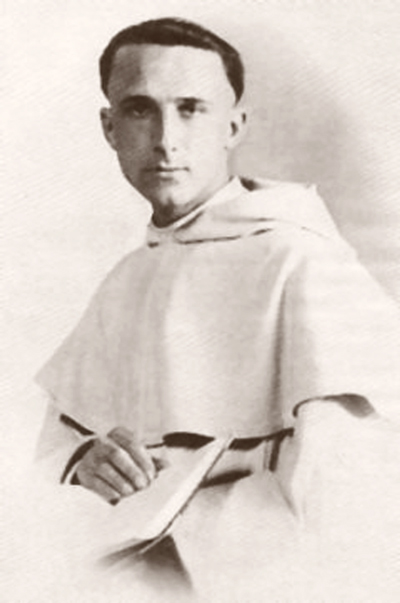
At any rate, let us believe with the saints that whatever the Lord does He does well, when He sends us humiliations and spiritual dryness as when He heaps honors and consolations upon us… Nowhere is there a deeper or more lively faith than in the conviction that God arranges everything for our welfare, even when He appears to destroy us and overthrow our most cherished plans, when He allows us to be calumniated, to suffer permanent ill-health, and other afflictions still more painful. This is a great faith indeed, for it is to believe the apparently incredible: that God will raise us up by casting us down. – Providence – Father Garrigou Lagrange
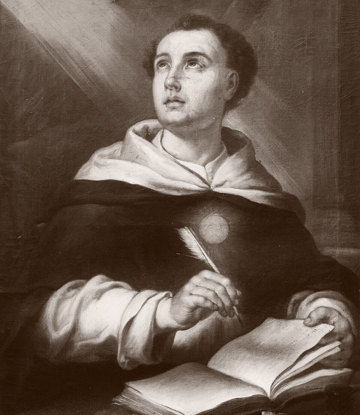
Confidence is a steadfast or intensified hope arising from a deep faith in the goodness of God, who, according to His promises, is ever at hand to help us. – St. Thomas Aquinas
It will be a help to realize and remember the simplicity that this whole attitude of soul brings to one’s life. In the practical, it is achieved by 1) fidelity to daily duty and 2) being attentive to the graces of the present moment. Both of these we have discussed at length in past newsletters. By fulfilling each duty in whatever glad or sad circumstances, and by being faithful to grace as it is given to us at any one moment, not only do we accomplish God’s will for us in the here and now, but we prepare and orient our souls for true progress in the spiritual life – greater graces, greater intimacy with God and a further share in the glorious, redeeming Cross.
In this practice of abandonment to God’s Providence, we see one of the great paradoxes of Christian life: the heights of perfection are attained through the healthy balance of what seem at first glance to be opposite virtues. For it is imprudent to attack the adversities of this life with the frenzied and frustrated activity of one relying on his own devices, or throw ourselves headlong into the battle, trusting to our own ingenuity to conquer the problems of this world. But neither should we just sit back passively and “allow life to happen” to us, without our effort or contribution. Rather, we must face our adversities with the courage, the fortitude, and the intrepid faith of true soldiers of Christ; always ready and on the lookout to defend His cause to the best of our ability; all while maintaining a childlike trust that asks no questions, needs no explanations, and simply abandons itself lovingly to all God sends, both good and bad, whether success or failure. As Saint Augustine summed up so well: “Pray as if all depends on God, and work as if all depends on you.”
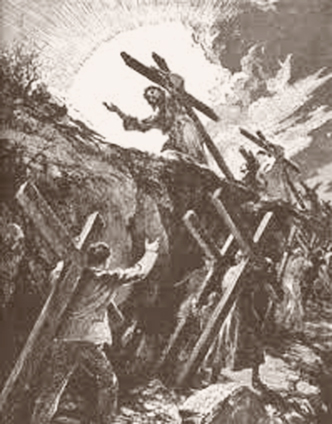
So, at the risk of being repetitious, and returning to the beginning of our letter and in summary of all the above, in these days when so much of our lives seems outside our control, let us always remind ourselves that just because it is outside of our control does not mean that it is outside God’s control. Let us trust God to be God….that is, let us depend on the fact that He is as almighty, all loving, all knowing, as we say He is – and that nothing can happen to us, the bad as well as the good, that is outside His loving Providence. We need only strive to do our part, to respond to His graces, to be willing tools in His hands as He continues the great work of His redemption in our own individual souls, and in those of our neighbor. In abandoning ourselves to His will, we will find peace of soul, no matter how long and hard the hill of Calvary may become, and we will taste the joys of Heaven, even while we still suffer with Him in this valley of tears.
Website News
The Sisters remain busy each day with our gift website – maintaining it, welcoming guests to it, making and obtaining the religious goods that with the blessing of a priest become sacramentals.
New Items
Holy water fonts and rosary boxes are a few of our new items – often chosen as gifts for special occasions. The more traditional religious art has really made a comeback, thanks be to God – and people value things that are beautiful and devotional.
Two more new book titles, in addition to Patience and Humility, are Young Catholic’s Daily Missal and Autobiography of Blessed Anne of St. Bartholomew. Please read the brief descriptions of these excellent books. Perhaps in a future newsletter, we could share more about Blessed Anne and her monumental contribution to the Carmelite Reform – all through humble obedience and surpassing love of God.
100% Beeswax Candles
Another new item on our website is 100% Beeswax Candles. We’ve been asked many times over the years to offer candles, and at long last we are able to fulfill that request. We have found locally handcrafted candles that are 100% beeswax – in several different sizes and styles for use at home. They are attractive, of good quality and are safely, tastefully packaged. They have already been flying off our shelves!
While candles are only solemnly blessed on February 2nd, Candlemas Day, our priests realize people do not at this time have access to blessings. They will be happy to give the candles a simple blessing if you request it at the time of your order. e time of your order.
In this newsletter, we are pleased to tell you about blessed candles – one of greatest Sacramentals of the Church, and one that is given to us, as are ashes and palms, directly through the Liturgy.
The Candle as a Symbol and as a Sacramental
Symbolically, the candle is a sacramental expression of Christ. The pure wax, made from virginal bees, is a symbol of the pure flesh of the Savior produced from the immaculate womb of Blessed Virgin Mary. The wick symbolizes Our Lord’s human soul, set alight and on fire with the flame of His Divinity. Just as the wax of the candle is consumed, so was Our Lord’s human nature immolated by His Divinity for the redemption of the human race.
It was Our Lord Himself Who said “I am the light of the world. Whoever follows me will not walk in darkness, but will have the light of life.” (Jn. 8:12) The symbol of light has always been associated with truth, and what greater truth is there than the Truth of Our Lord? The prayers surrounding the solemn blessing of candles, performed on February 2nd, the Feast of the Purification, repeatedly beseech God for the light of Faith, for the inspirations of grace. Remembering that sacramentals are physical objects/signs through which God gives grace, it is not hard to see what graces we hope to receive through the use of the blessed candle: the Light of Truth and an increase of knowledge and understanding of that Truth.
“O Lord Jesus Christ, the true Light that enlightens every man who comes into this world: pour forth Your blessing upon these candles, and sanctify them with the light of Your grace, and mercifully grant, that as these lights, enkindled with visible fire, dispel the darkness of night, so our hearts, being illumined by invisible fire, that is, by the radiance of the Holy Spirit, may be delivered from the blindness of all vice; that, the eye of our mind being cleansed, we may be able to discern those things that are pleasing to You and profitable to our salvation; so that after the perilous darkness of this world we may deserve to attain to never-failing light.”
– Feast of the Purification, Blessing of the Candles
The Paschal Candle
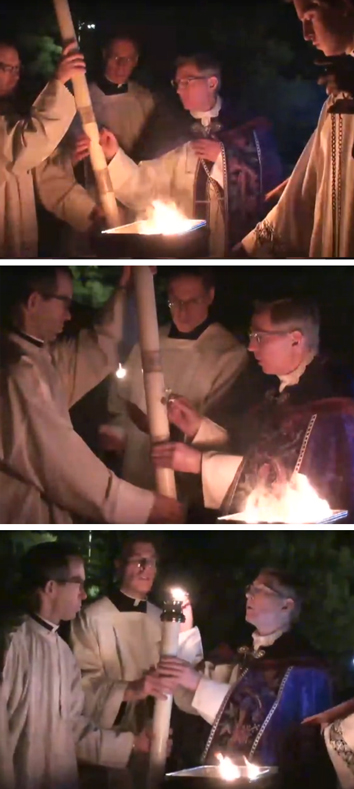
All of these signs and graces are brought ever clearer before our eyes on the Feast of Easter, when the Church blesses the Paschal Candle and the new fire. This ancient rite has been performed by the Church since the earliest days, when the first Christians would gather inside the tomb of Our Lord holding the Paschal Candle and waiting in silence. The Easter Vigil would only begin when the New Fire would be suddenly, miraculously lit – the moment liturgically which renews the Resurrection of Our Lord.
Before it is lit, this great candle is inscribed with Α Ω (Alpha and Omega) and pierced with five nails. In the tip of each of the nails is a grain of incense, representing the “sweetness” the wounds of Christ are to us. After it is lit, the large pillar is plunged into the water basin during the blessing of the Baptismal water – another symbol of Christ Himself sanctifying the water that will be used for baptisms that year. And all during the Paschal Season, this very special candle remains in the church sanctuary, bringing us the constant remembrance of Christ risen from the dead. It is extinguished ceremoniously at the reading of the Gospel on Ascension Thursday.
We must include a word about the Exultet, the great and beautiful “Easter Proclamation” sung during the Easter Vigil just after the Paschal Candle is lit. The exquisite melody of this encomium lifts the mind and heart to heaven! Mozart declared that he would have traded all the pieces he had ever written to have been responsible for composing just the first line of this hymn. While the words of the Exultet deserve to be read in their entirety, especially since this year not many heard them, a few passages convey all that the Paschal Candle represents:
“Let the angelic choir of heaven now rejoice … let the earth rejoice made radiant by such a splendor, and enlightened by the brightness of the eternal King, let it know that the darkness of the whole world is scattered. This is the night in which, destroying the chains of death, Christ arose victorious from the grave. For it would have profited us nothing to have been born, unless redemption had also been bestowed upon us … This is the night of which it is written: And the night shall be as clear as the day; and the night is my light in my pleasures. Therefore, the sanctification of this night puts to flight all wickedness, cleanses sins, and restores innocence to the fallen, and gladness to the sorrowful. Therefore, in this sacred night, receive O holy Father, the evening sacrifice of incense, which Holy Church renders to You by the hands of Your Ministers in the solemn offering of this wax candle … kindled to the honor of God. We beseech You, therefore, O Lord, that this wax candle, sanctified in honor of Your name, may continue to burn to dissipate the darkness of this night. And being accepted as an odor of sweetness, may it be united with the heavenly lights. Let the morning star find its flame alight, that star that knows no setting, He Who returning from the grave, serenely shone forth upon mankind…”
The Agnus Dei
An Agnus Dei is a round or oval wax disk impressed with a lamb on one side and figures of saints or the pope on the other side. These disks were produced by melting down the wax of the previous year’s Paschal candles from the churches of Rome. Chrism oil was then added to the melted wax, and sometimes small relics of the martyrs. The popes blessed the disks that were then given to people to be used as sacramentals. Although the origin of this sacramental is uncertain, but it is believed to be a tradition since the 5th century. Our founding Carmelite Mothers possessed and handed down to us Agnus Dei disks from St. Pope Pius X, Pope Pius XI, and Pope Pius XII – treasures indeed! Our Community is blessed always to have a Paschal candle from past years. We light this candle in any time of crisis, such as last week when we had a tornado forming over our Monastery! It serves as a prayer for divine aid, and never has the prayer gone unanswered in some way.
The History and Use of Candles in the Church
Besides the candles blessed on the Feast of the Purification and the Paschal candle, the Church has always made use of candles in many other ways. During the times of persecutions in the early Church, they were used to light the altars for Mass which were often held deep inside the dark catacombs. In memory of this history, the Church has always required at least two candles to be lit on the altar during Mass.
It is the grave obligation of the sacristan in any Church to keep the sanctuary lamp lit whenever the Blessed Sacrament is present in the tabernacle. This is to alert the people to the presence of Our Lord. Candles are used in baptismal ceremonies, ordination ceremonies, and religious profession ceremonies as well.
Of course, it has also long been Catholic custom for people to light candles in the Church, in the presence of the Blessed Sacrament and in front of the shrines of Our Lady and the Saints. The lit candle is a symbol of our prayer, continuing uninterrupted in our stead, when we cannot physically remain in the church or chapel.
In this case, the candle truly is a symbol of us, the bright flame our own burning love for God and our self-offering – our life being consumed, in imitation of Our Lord. It is often the practice to “make a prayer or intention” when lighting a candle in the Church, not unlike when we have a Mass offered. Since we have made some small donation for the candle, it is ours, and the burning of it before Our Lord is a type of sacrifice.
While we would not recommend leaving a lit candle in the home unattended, it has also been the practice to light candles during our prayers at home, and this is especially appreciated when the family prays together.
Realizing that there are still many who cannot make visits to churches and chapels, we would like to offer you a special opportunity to have a candle lit “in your place” in our chapel. Please visit this website to arrange for this.

The St. Benedict wood inlaid crucifixes are now available on rosaries (including our custom rosary feature) and for individual purchase in all four styles – nickel silver rosewood, nickel silver ebony, two-tone rosewood, and two-tone ebony.
Community News
Life outside our enclosure, we know, has been in upheaval. The world has been turned on its head these past few months, and we are more than ever occupied with answering emails, letters and prayer requests. People are troubled, confused, afraid. Our own family members are among the frightened. But we do see that souls are not simply bracing themselves for onslaught of more adversity. They are seeking – and finding – God’s certain and gracious help. Despite the outside world in turmoil, they are tapping into the graces received through prayer, the sacraments and humble trust in the Providence that is guiding history each day and each moment. And they are finding strength to do good each day in charity that is tried, but matured through trial. Our prayers and sacrifices have constant remembrance of these struggles and victories, however hidden they may be.
Not many people believe us when we say that for us, day-to-day life hasn’t changed all that much. “Quarantine” is not a new concept for us. As one Sister said when asked if she had quarantined and for how long: “I have spent the past twenty years in self-quarantine!” All our work, our prayer, the Holy Mass – all is here, where it has ever been for us. And the outside disturbance and upheaval have been an occasion of appreciating all the more those blessings, especially when we are painfully aware that they have been denied to so many others.
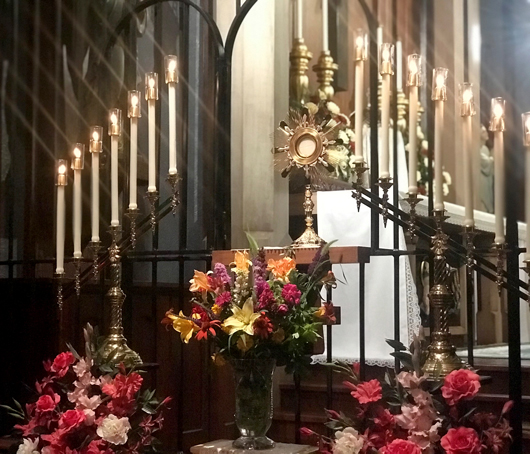
So life in Carmel – its joys, sorrows, sacrifices and blessings – has continued much as it always has done, bringing to mind the Carthusian motto: “The Cross stands firm as the world turns.” Twice in these months we have had Exposition of the Blessed Sacrament: for the Feast of Corpus Christi, and then an all-night vigil for the Feast of Our Lady of Mount Carmel. Those special occasions, and every day, we continue to bring all of you with us to the altar, to the feet of Our Savior.
Carmelite Feast Days
This month of July abounds with Carmelite Feast Days. Of course, we had the great feast of Our Lady of Mount Carmel on the 16th. It was wonderful that day to witness the strong devotion to Our Lady of the many who visited our website to obtain the Brown Scapular. We had so many requests for scapulars that day that we are still struggling to catch up! And we are grateful for the many good wishes sent to us that day. Not as widely known and a somewhat hidden Feast Day is the very next day, July 17th: the Martyrs of Compiegne. They were 16 Carmelite nuns who went to the guillotine rejoicing and singing the Salve Regina and Te Deum in the final days of the French Revolution. It was especially poignant for us this year, when in the present social climate, we reflected to ask ourselves if we too would give, and are giving, our lives as generously as these women did for Christ’s cause. And what can be said of St. Elias, Father of Carmelites? This giant with a warrior’s spirit, whose feast is celebrated on July 20th, has yet to complete his work on earth, for it is written that he will one day return to battle the antichrist. His uncompromising zeal for the honor of God, a virtue so needed in these days of fear and apathy, is the hallmark of Carmel: “Zelo zelatus sum!” – “With zeal I have been zealous for the Lord God of Hosts.”
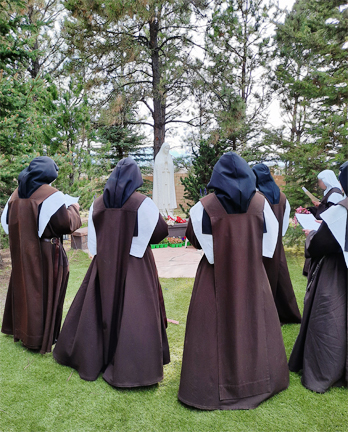
Alas, there is so much to be said about these Patrons and heroes of Carmel that cannot be said here (though we have discussed all three at length in past newsletters, Our Lady and the Brown Scapular, Martyrs of Compiegne, St. Elias and Zeal). But we cannot allow today to pass without at least acknowledging this Feast Day, July 23rd. It is the octave day of Our Lady of Mount Carmel, Our Lady Mediatrix of All Grace. Please join us today in honoring Our Blessed Mother under this special title. The prayer of today’s Mass sums it up quite well: “O Lord Jesus Christ, our Mediator with the Father, you have appointed the most blessed Virgin, your Mother, who is also our mother, as our mediatrix with you. Grant that whoever comes to you seeking blessings, may be given the favors he seeks through her pleading.”
Vestment Projects
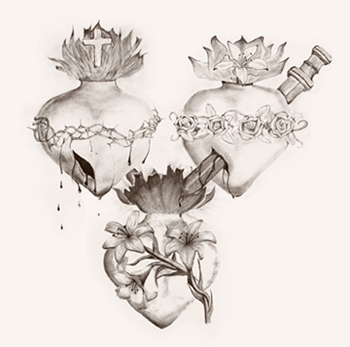
This year, we took on not one, but two vestment projects! Both were for gifts for Priestly anniversaries, and both had been in planning stages since 2019. The first vestment, completed in April, centered around the Holy Family with a large art work applique in the center, a Murillo printed on fabric. While designing the embroidery to decorate the rest of the vestment, we came across an old holy card picturing the Sacred Hearts of Jesus, Mary, and Joseph. We thought it would be a wonderful way to augment the message and theme of the vestment to include these symbols in our embroidery patterns. One of the young seminarians produced detailed pencil drawings of each of the three hearts, and this beautiful original artwork we digitized for the vestment. Including the Holy Names in the design and an invocation to the Holy Family seemed fitting, as did using deep shades of royal red with the gold – since we know that this special vestment will often be used during the Christmas season. Embroidery thread comes in so many stunning colors and textures these days – the subtle sparkle and metallic really offer the opportunity to create dimension and reflect light in the designs. Having a wide variety of thread choices was also a help in getting the red designs to show up (but not overwhelm) the red velvet. One wouldn’t think it just by looking at it, but there are over ten different shades/types of red thread in the embroidery for this vestment.
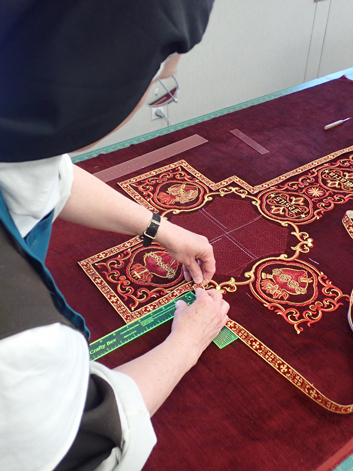
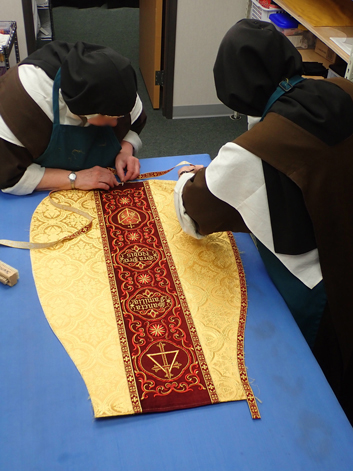
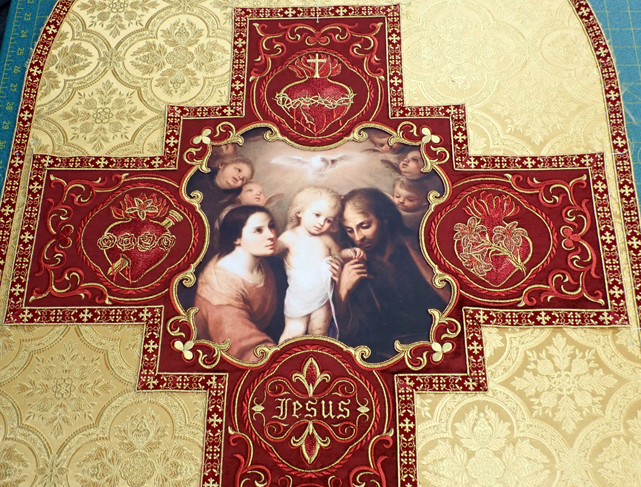
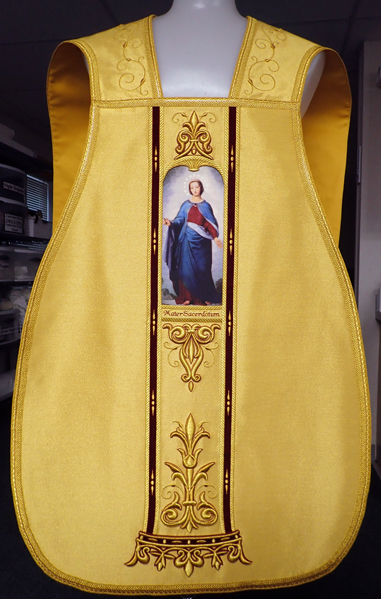
Our second vestment was to commemorate the Silver Jubilee of three of our priests. Also in gold and red, we wanted to center the theme around the Holy Priesthood. The large image with the entire table of the Last Supper at the center of the cross is visually reminiscent of the altar. The cross on the back of any vestment is of course a symbol of Our Lord’s sacrifice on the Cross, and we wanted our design to exalt the Holy Eucharist as both Sacrament and Sacrifice. Under the printed art work, embroidered on red velvet in small, ornate letters, are the words, Hoc Facite in Meam Commemerationem (Do this in Commemoration of Me): Christ’s perpetual mandate to His Church and to His priests. Crowns at the tips of the cross symbolize Our Lord’s Kingship. No vestment dedicated to the Priesthood seemed complete without the Holy Virgin Mary, Mother of Christ the High Priest, so on the vestment front, we enshrined her image with the invocation Mater Sacerdotum (Mother of Priests). This image shows the twelve stars around her head, written of in the Apocalypse and symbolic of the twelve tribes of Israel – and the twelve apostles present at the Last Supper.
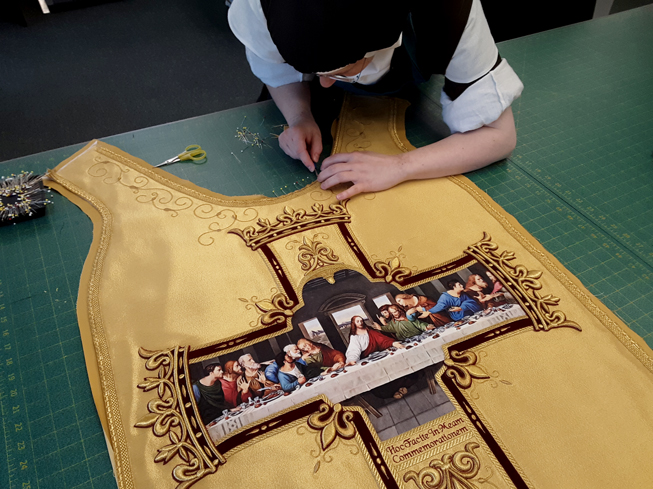
This second vestment was not without its meandering adventures! Last November or December, we attempted to order the stunningly beautiful gold fabric from a company overseas we had worked with before. But for some reason, communications kept breaking down. Perhaps the German-to-English translation was just not connecting, but after numerous attempts into January and February with no commitments, we had to find another option – fast! Thanks be to God, a relative of one of the Sisters who speaks fluent German was thrilled to assist us, and she even helped us find another company in Germany that could have the fabric woven for us. The order was split into two packages and shipped the same day, but got stalled in the international mails just as countries across Europe were shutting down. We cheered when the first package arrived, but had to face the fact that it was just barely enough fabric, with no wiggle-room for mistakes. We put the problem in St. Joseph’s hands and with trust started placing the pattern and cutting, not at all certain we would be able to finish the project! Then, two weeks after Easter, the other package followed, travel-worn but safely filled with the rest of the fabric we would need.
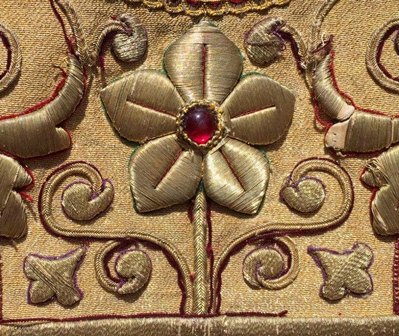
The embroidery was also a challenging adventure. Our project called for ornate crowns and filigree-like embroidery, gold designs embroidered into gold fabric, and we knew that unless we could get some 3-dimensional effect with the embroidery, the entire design would hardly show. Always trying to revive old embroidery techniques with new technology, we decided this time around to try and imitate “stumpwork,” or raised work, a technique used on ecclesiastical garments for centuries. The method used by nuns and other vestment-makers was to cut from multiple layers of felt-like fabric or cardboard shapes of flowers, leaves and other ornamental designs. These pieces would be hand-wrapped with gold wire or threads and be stitched or wire-secured onto the vestment.
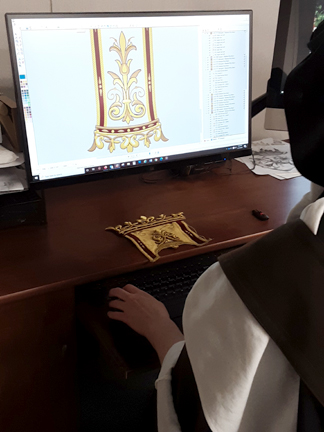
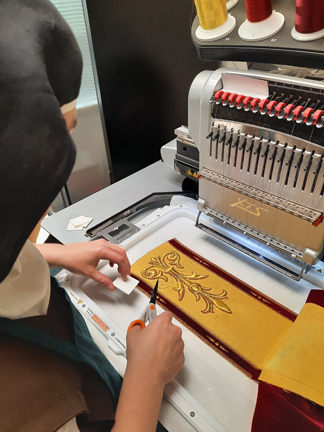
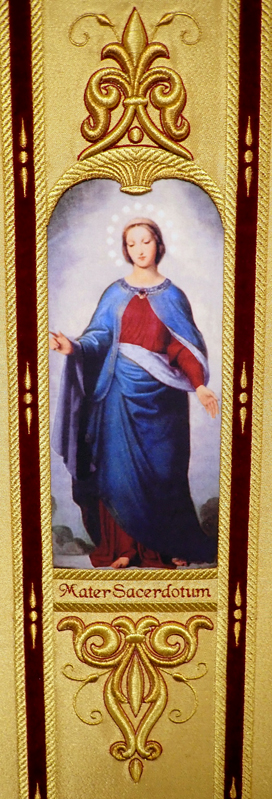
Modern-day embroidery has come up with a clever imitation in a technique known as puff embroidery. “Puffy foam” is vinyl acetate padding, and a sheet of this is placed between the fabric and the needle of the embroidery machine. When the machine stitches the design, the embroidery is raised above the fabric giving it a 3-D look. We used puffy foam on vestments some years ago, but were limited in the shapes we could successfully create. Over time, as we learned more about machine embroidery, we realized that we didn’t quite have the technique mastered (in fact, we were doing it completely wrong!). But we gathered a little more information and started experimenting/adjusting – – and experimenting/adjusting some more… We had also been told by professional embroiderers and digitizers that 3-D puff embroidery with metallic thread was “impossible” because the weight and consistency of metallic thread is fragile. But with our usual “Carmelite determination,” we decided to do it anyway.
After much experimentation, trial and error, we do concur that it is impossible – for most purposes. If we were embroidering hats or handbags, we wouldn’t be willing to put in the time and effort needed to make metallic 3-D embroidery work. But this was a vestment intended for Divine worship, and we know nothing should ever be spared in our efforts for the altar. So by overriding many of the settings on the machine and software – settings meant to make embroidery easy; by “babysitting” every piece of the embroidery as it sewed out; and by having a small army of Sisters armed with tweezers, magnifying glasses, and heat guns work for several hours “cleaning up” the designs after they were sewed out – we managed to create our own modern day stumpwork.
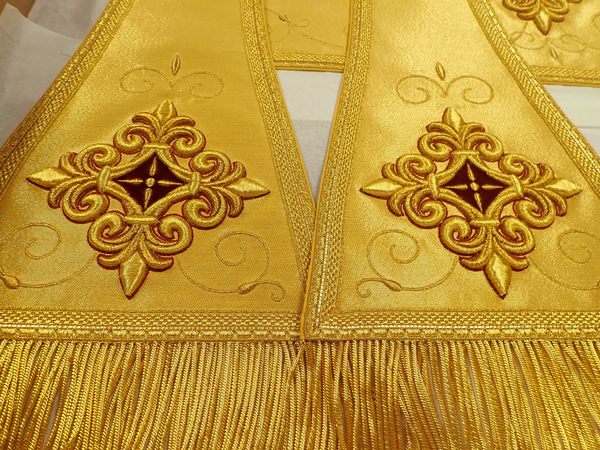
Overriding the settings/safety controls on the machine did have its disadvantages at times. At one point, Sister turned her back on the machine for a moment too long. The thread broke, and while usually the machine would detect this and stop sewing, it just kept “sewing” merrily away, spitting metallic thread all over the place into a nice tangled mess, rather than stitching into the fabric.
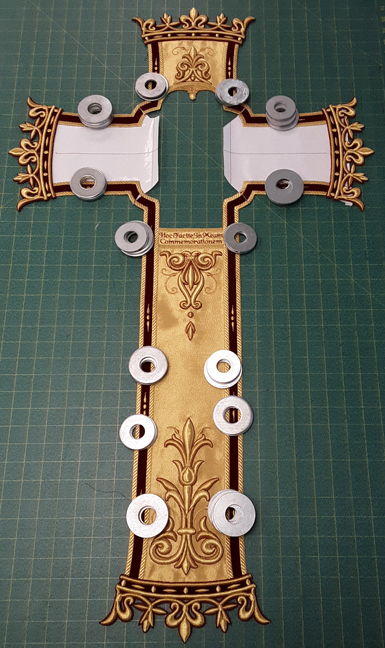
Some of the pieces we embroidered right into the fabric, and some (such as the crowns) we sewed out separately and hand-tacked to the vestment afterwards, not unlike the original stumpwork method. It was like putting together a puzzle, getting all the pieces in the right place and covering all of our seams. In the end (somewhat to our surprise and relief) it did finally all come together.
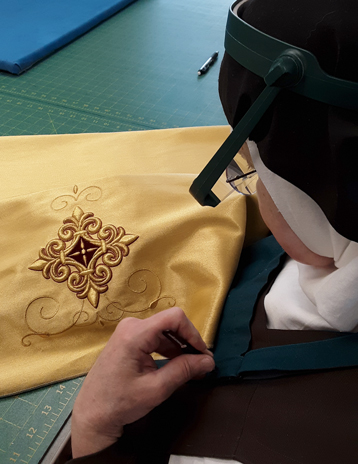
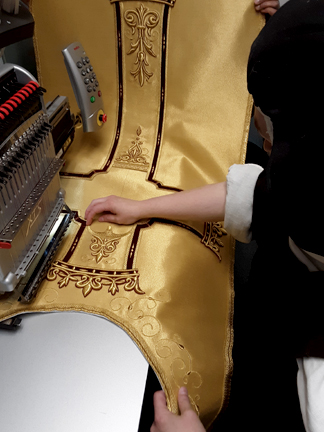

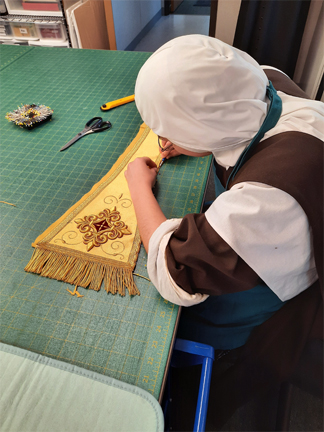
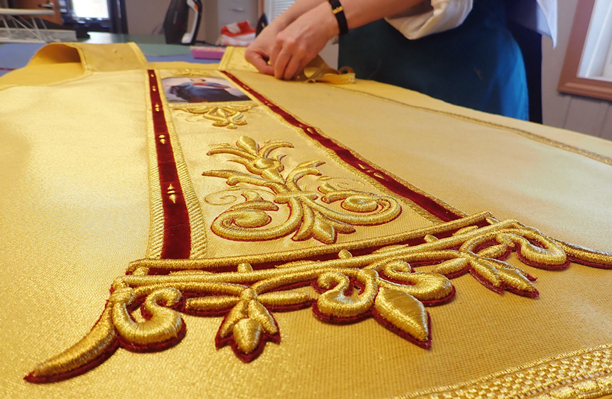
Backyard Dramas

This past Winter was tough, and spring even worse in our area. The results of last early October’s sudden temperature drop (from 83° to 13° overnight!) appeared in sad fashion as spring turned to summer, and many trees in the area failed to leaf out and thrive. We lost branches on some trees, but an entire large ash tree was our big loss: our very own “White Tree of Gondor,” aptly nicknamed by the Sisters because we hoped each day to see one or two green buds. Our landscaping friends and our own Mr. Stump tree expert told us, “If no leaves by July 1st, the tree is officially dead.” One of the Sisters could not accept this without a plan to alter the course of nature – with St. Benedict medals, holy water, etc. Sadly, the tree didn’t make it, but we’re hoping to plant another in the same area before fall.
For a second year, our backyard is home to a pair of Cooper’s hawks. While we have enjoyed watching this hawk pair raising a new family of chicks, it has its disadvantages – and a big one is that their presence has really intruded on the safe haven we’ve long had for wild songbirds of all sorts. Robins are few, as well as most other birds, and we miss them! We miss the bluebird’s whimpering call, and the blue jay’s raucous one. We miss seeing nuthatches make their way studiously up and down ponderosa tree trunks. We miss seeing the whole variety of them at our feeders… The fruit on our serviceberry and chokecherry trees, as well as current bushes, fill bending branches, whereas by now the robins and others would have picked them clean. We miss the humorous, clumsy attempts of the larger birds to gather the fruit, wings flapping as weight and gravity drew them down away from the branch they would try to sit on… Ah well, we may still try to collect the fruit and make a juice or jelly.
We did have one successful bird nesting in our oldest nest box: Mountain chickadees. These tough, fearless little birds seemed to snub the hawks, completely ignoring them! We say “seemed,” because we know they must have used their instinctive caution to avoid being hawk dinners! The photos show the wonderful process of their growth, and on fledging day, we could hear their scratchy voices calling one another from the tree branches – safe and free. They do seem to be thriving still, avoiding the hawks’ radar, since we still hear them residing nearby.

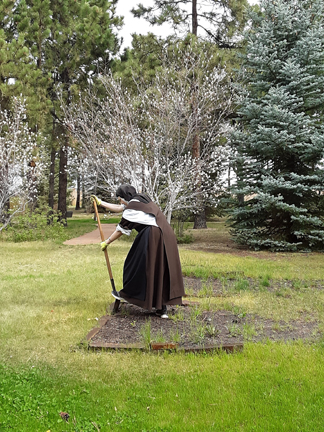
The gardens have done well this summer. Mother Prioress divided watering and care duties, and the Sisters are doing a wonderful job keeping things lovely. We are always delighted by the surprise plants that propagate, showing up as new in the garden and filling it with color. The vegetable gardens are doing okay – gophers have arrived and we’re trying to keep a good eye on the tomato plants to keep them safe. Kohlrabi, lettuces, beets, beans, cucumbers … and of course, zucchini. We have been enjoying and look forward to enjoying late summer harvests.
The beauty surrounding us wasn’t always this way. Thirty years of care and work transformed it from empty high plain to the oasis it has become. Deo gratias! Our Holy Mother St. Teresa and Our Holy Father St. John themselves loved to provide some quiet beauty of nature at their monasteries – places to pray, read and even work.
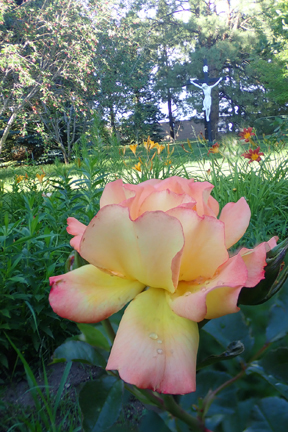


Of course, no “nature update” at Carmel would be complete without a mention of our two 4-legged members! The arrival of summer means more time romping in the field, stalking each other like lions in the knee high grass, and always alerting us to anything unusual going on in the yard. Meika has been sharpening her protection skills, practicing on things such as airplanes, crows and toads, toward which she can be quite fierce in protecting her Sisters. Zelie, now four, takes a slightly more mature/laid-back/middle-aged view on life (emphasis on slightly). That is, when compared to the “neurotic energy” we told you about when describing her puppy days. Both German Shepherds have developed a stubborn streak when it comes to following their daily routine: they must keep us in line, and all must be the same each and every day, at every particular part of the day! They love spending the work mornings at Loreto with the Sisters, and will stubbornly sit at the door when it is time to leave, and will not move, waiting for a magic word like “walk” or “playing in the field” – and even “Let’s go back for prayer,” when the morning’s worktime is over.
So with this canine update, we bring our letter to an end. All of the works and projects of Carmel always depend and have their source, in the tender, ever-watchful Providence of our good God. Even Zelie and Meika, with each day’s passing, are subject to that Providence! So let us all preserve in our hearts the confident, peaceful trust of children who know they are in a loving Father’s keeping. The prayer of St. Augustine below expresses this attitude of soul, which should characterize the Christian heart. May its noble sentiments be in our hearts as we meet whatever trials are in the days ahead, whatever sacrifices we may be called upon to make.
Prayerfully in Our Lady of Mount Carmel,
Your Carmelite Sisters
Prayer of St. Augustine
O my God, I leave myself entirely in Thy hands. Turn and turn again this mass of clay, as a vessel; then break it if Thou wilt: it is Thine, it has nothing to say. Enough for me that it serves all Thy designs and that nothing resists Thy good pleasure for which I was made. Ask, command. What wouldst Thou have me to do? What wouldst Thou have me not to do? Lifted up, cast down, in persecution, in consolation, in suffering, intent upon Thy work, good for nothing, I can do no more than repeat with Thy holy Mother: “Be it done unto me according to Thy word.”
Give me that love which is beyond all loves, the love of the cross – not the heroic crosses with a glory that might foster self-love, but those ordinary crosses which we bear with so much distaste – those daily crosses with which our life is strewn and which at every moment we encounter on our way through life: contradictions, neglect, failures, opposition, false judgments, the coldness or impulsiveness of some, the rebuffs or contempt of others, bodily infirmities, spiritual darkness, silence and interior dryness. Only then wilt Thou know that I love Thee, even though I neither know nor feel it myself; and that is enough for me.
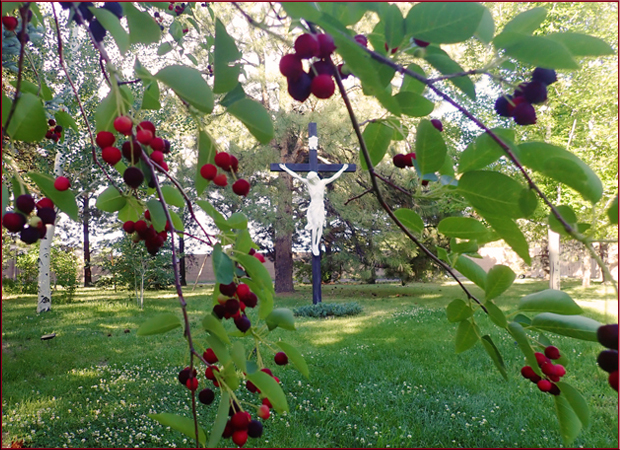
Copywrite 2020 Sisters of Carmel All Rights Reserved

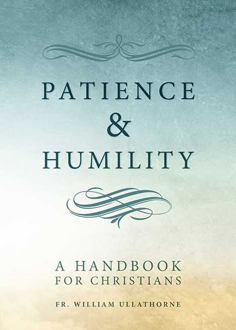

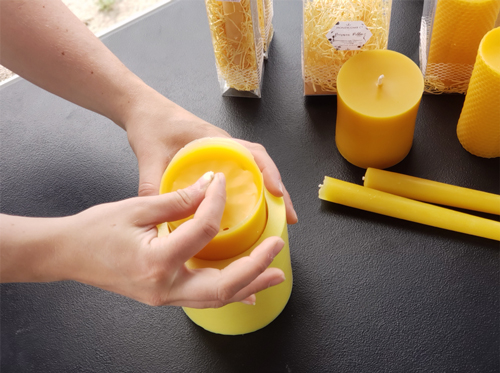
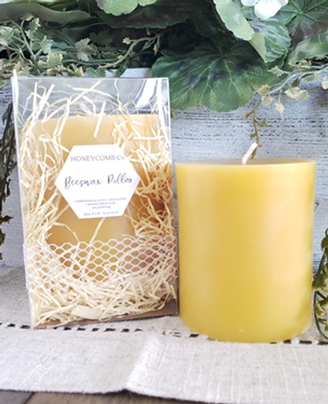
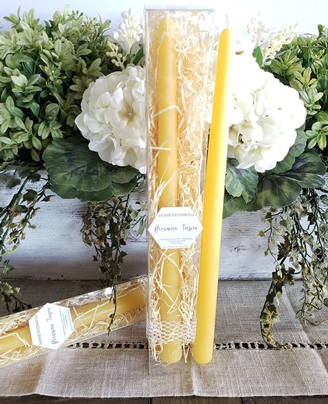


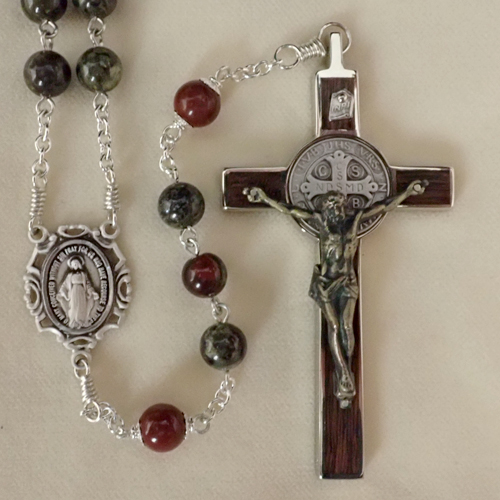
2 thoughts on “Trust in Divine Providence”
Comments are closed.